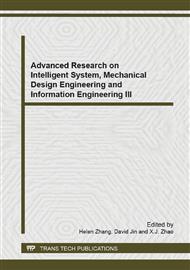p.235
p.239
p.245
p.249
p.253
p.257
p.261
p.265
p.269
Applied-Information Technology with Method of Digital Image Noise Processing
Abstract:
Digital image processing is a kind of technology which employs a certain algorithm to realize image processing through computer algorithm. The powerful capacity of computing and graphics displaying function of Matlab makes image processing becomes more simple and intuitive. This paper introduces the basic knowledge of dealing with noise in digital image, expounds the neighborhood average method, median filtering in detail, and low pass filtering and other typical of eliminating noise method , and at the same time analyzes and compares the characteristics of several typical methods by use of the software Matlab.
Info:
Periodical:
Pages:
253-256
Citation:
Online since:
May 2014
Authors:
Keywords:
Price:
Сopyright:
© 2014 Trans Tech Publications Ltd. All Rights Reserved
Share:
Citation:


